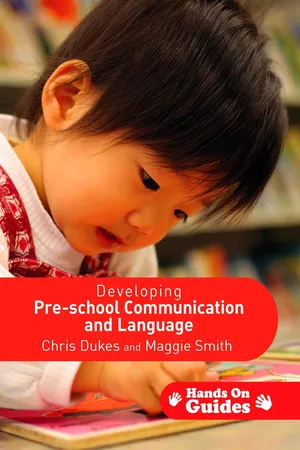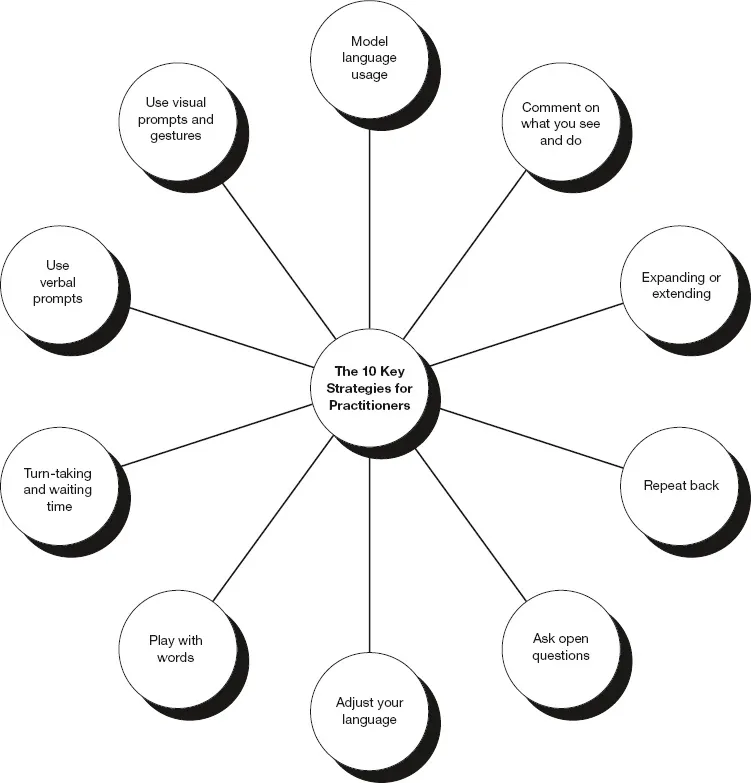
- 128 pages
- English
- ePUB (mobile friendly)
- Available on iOS & Android
Developing Pre-school Communication and Language
About This Book
Includes CD-Rom
`This book is highly recommended for all practitioners interested in improving their practice in developing young children?s communication and language. The ability to print material form the CD-Rom enables the information to be accessed by practitioners working with children of different ages in different rooms in a setting? - Early Years Update
`A very clear and easy to read style of text...This book has a common sense approach to good practice. I thoroughly recommend this book to anyone wishing to develop this area of childminding work? - National Childminding Association
`An excellent resource for all those working with young children...the ideas are tried and tested, user-friendly and research-based, and can be trusted and implemented with ease? - Early Years Educator
`This book will be an invaluable support: a treasure-chest of superb resources, materials, ideas and suggestions for the busy early years practitioner who is keen to develop the language of the children in their care. The CD-ROM will save some of that precious time we all strive to expand, and the practical strategies offered will be a boon to practice in the setting? - Collette Drifte
Looking for advice on how to develop communication and language skills in the pre-school?
Packed with helpful advice on supporting and developing the crucial language and communication skills of the children in your early years setting, this book provides clear guidance on appropriate expectations for each age group between birth to five.
The book includes:
-advice on how to support language development in all children, including those with special educational needs
-practical ideas and strategies for practitioners and parents
-guidance on when to seek advice and working with other professionals
- activities and case studies
-a CD Rom with useful photocopiable resources.
This book is ideal for all those working with the 0 to 5 age range, such as pre-school practitioners, nursery managers, advisory teachers, SENCOs, Inclusion Officers and Child Care and Education students and tutors.
Chris Dukes and Maggie Smith are both Area SENCOs who work closely with pre-school SENCOs and Managers on a daily basis.
Frequently asked questions
Information
| CHAPTER ONE | ||
| Getting started: people, places, play and planning |  | |




People
The role of the practitioner

Table of contents
- Cover Page
- Title Page
- Copyright Page
- Contents
- Contents of the CD-Rom
- Acknowledgements
- Introduction
- 1 Getting started: people, places, play and planning
- 2 Babies: 0–11 months
- 3 Babies and toddlers: 8–20 months
- 4 Toddlers: 16–26 months
- 5 Toddlers and children: 22–36 months
- 6 Children: 30–50 months
- 7 Children: 40–60 months
- 8 Working with young bilingual learners
- 9 Creating language opportunities in the pre-school
- 10 Meeting individual needs (with case studies)
- Appendix A Useful contacts
- Appendix B Crossword solution
- References
- Index
